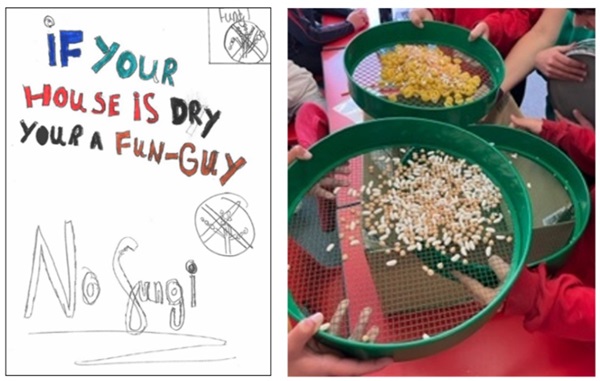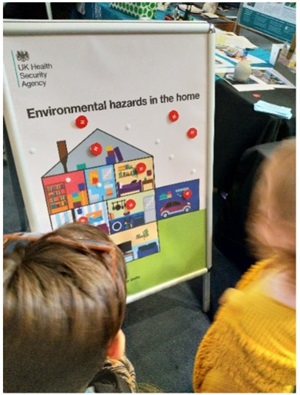Centre for Environmental Health and Sustainability
PCIEP
Public and Community Involvement, Engagement and Participation
The HRPU wants to ensure the research undertaken is enriched by public experiences and has outputs that have a real-world application and make a difference.
To achieve this, we put members of the public at the heart of everything we do, by involving them in everything that we do, engaging with them, and asking them to participate in our research.

Our Public Involvement Panel in Environment and Technology (PIPET) have directed and informed everything we do as a HPRU. Steve Watson, Chair of Midlands Asthma and Allergy Research (MAARA), is our lay member on the HPRU’s Executive Board.
We outline below some examples of what PCIEP activities we have done, and what is planned within our HPRU.
Public Involvement
We involve members of the public in our research at all stages of our work, in many different ways.
Before we were funded, and we were developing our grant application, we held a workshop involving members of the public. This was fundamental to prioritising our proposed work, inputting into our lay summary, and discussing our initial PCIEP strategy. Some of the people involved in this workshop went on to form our PIPET panel.

Our PIPET panel meet at least twice a year, are invited to our annual meetings, and comment and input into our work ad-hoc as and when needed.
The Indoor Air and Health project ran a public involvement workshop to help development the resources for the project, including inputting and commenting on:
- The choices of sampling equipment used to collect indoor air samples in the homes of members of the public, and reviewing how easy/difficult the instructions to use the sampling equipment were
- Questionnaires that members of the public would be asked to complete
- Spirometers (which measure the amount of air you can breathe out in one second and the total volume of air you can exhale in one forced breath), and how long they’d be happy to do this for (e.g. 12 weeks)
- What information you'd want to know if signing up to a research study
Want to get involved?
Want to work with us and get your voice heard? We are always looking to expand and diversify our PIPET panel, to ensure our research is relevant to public needs.
You do not need to have scientific knowledge to be involved - we just want your enthusiasm, your opinions and your real life experiences. For your time and contribution, you can receive honorarium payments or other recognition.
If you are interested and like further information, please get in touch at cehs@leicester.ac.uk.
Engagement
We want to share our knowledge and finding with the members of the public to educate, advise and empower. We do this in a number of ways, including attending science festivals and events that are free to attend, developing, supporting STEM (Science, technology, engineering, and mathematics) activities for school-aged children and developing reusable outreach tools and resources
We have developed three videos to explain the work we do within the HPRU on the following topics:
- An introduction to the HPRU
- A summary of our work on the Bioaerosols and Health project
- A summary of our work on 3D printing within the Indoor Air and Health project
These will be launched soon – watch this space! For now, here is our teaser video.
We have been educating our future environmental health experts. We developed some lesson plans on bioaerosols and health and have tested the session on Year 6 students. Across the three interactive sessions, the students learnt:
- What bioaerosols are
- How bioaerosols are formed and the good and bad effects on human health
- How we sample bioaerosols and identify biological particles using traditional and molecular techniques
- About risk assessment and risk communication

Get in touch at cehs@leicester.ac.uk if you wish to use our teaching materials.
We have attended the ATOM Science and Technology Festival, and Oxford Ideas Festival Here we are educating the public on Indoor Air, one of the topics we cover in our HPRU.

Participation
We also rely on members of the public to help generate our data and results by taking part in our studies. As previously mentioned, within the Indoor Air project our scientists are sampling the indoor air in people’s homes and asking them to complete questionnaires detailing their indoor activities. We simply cannot do our research without you!
The HPRU follows the UK Standards for Public Involvement in Research which has six standards (communication, working together, inclusive opportunities, impact, governance and support and learning) that were developed to provide quality and consistency of public involvement in research. The activities undertaken within the HPRU are reported against these standards.